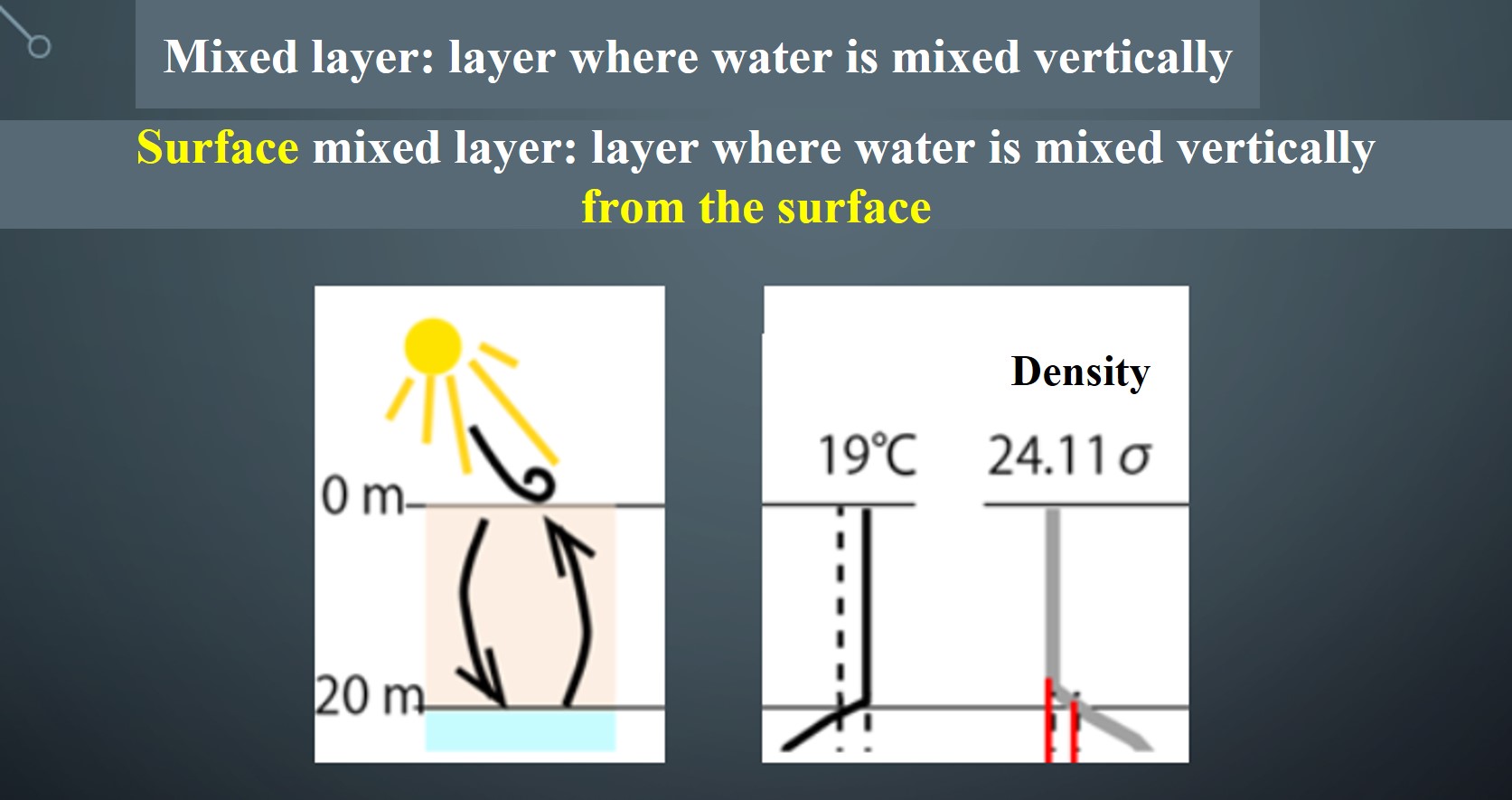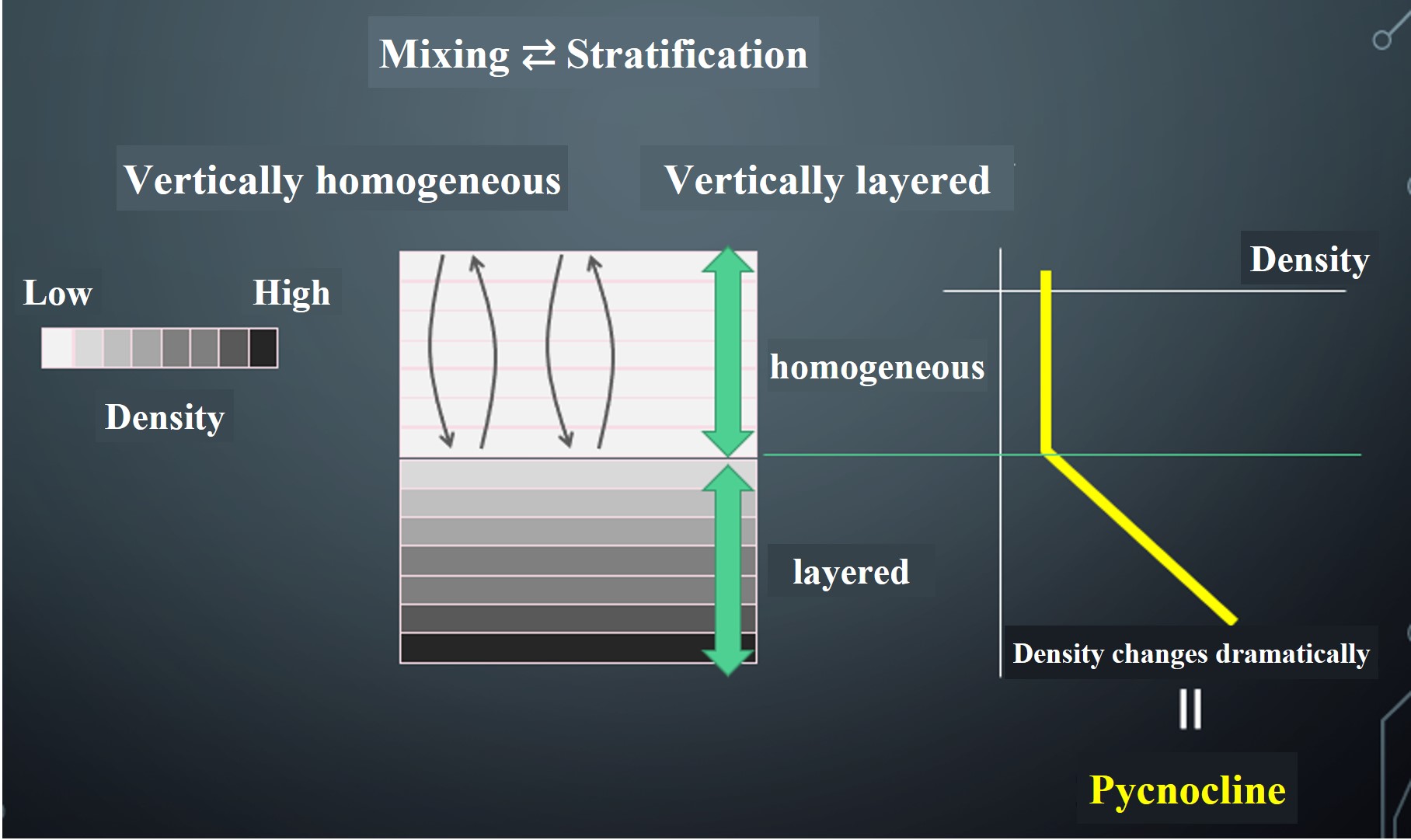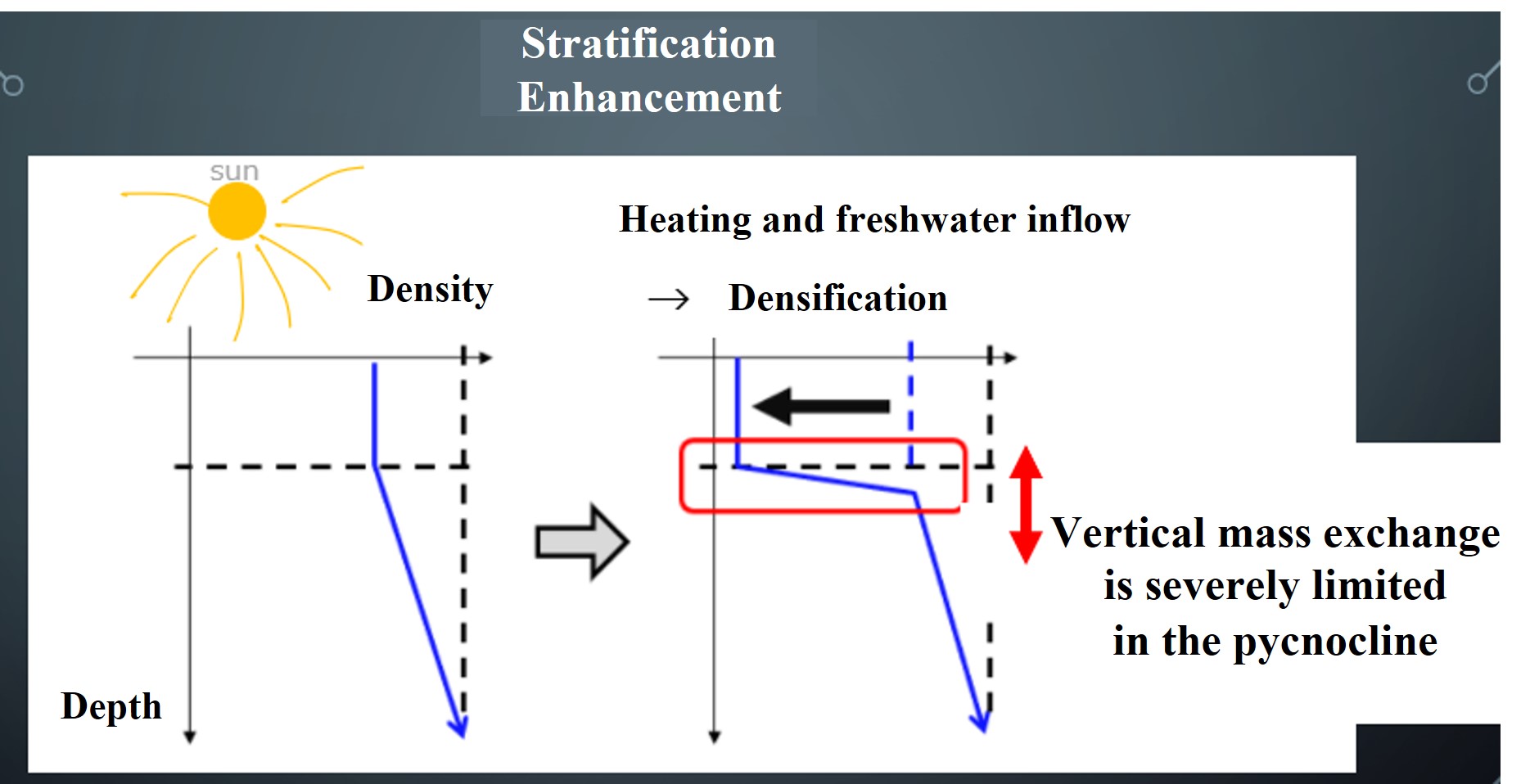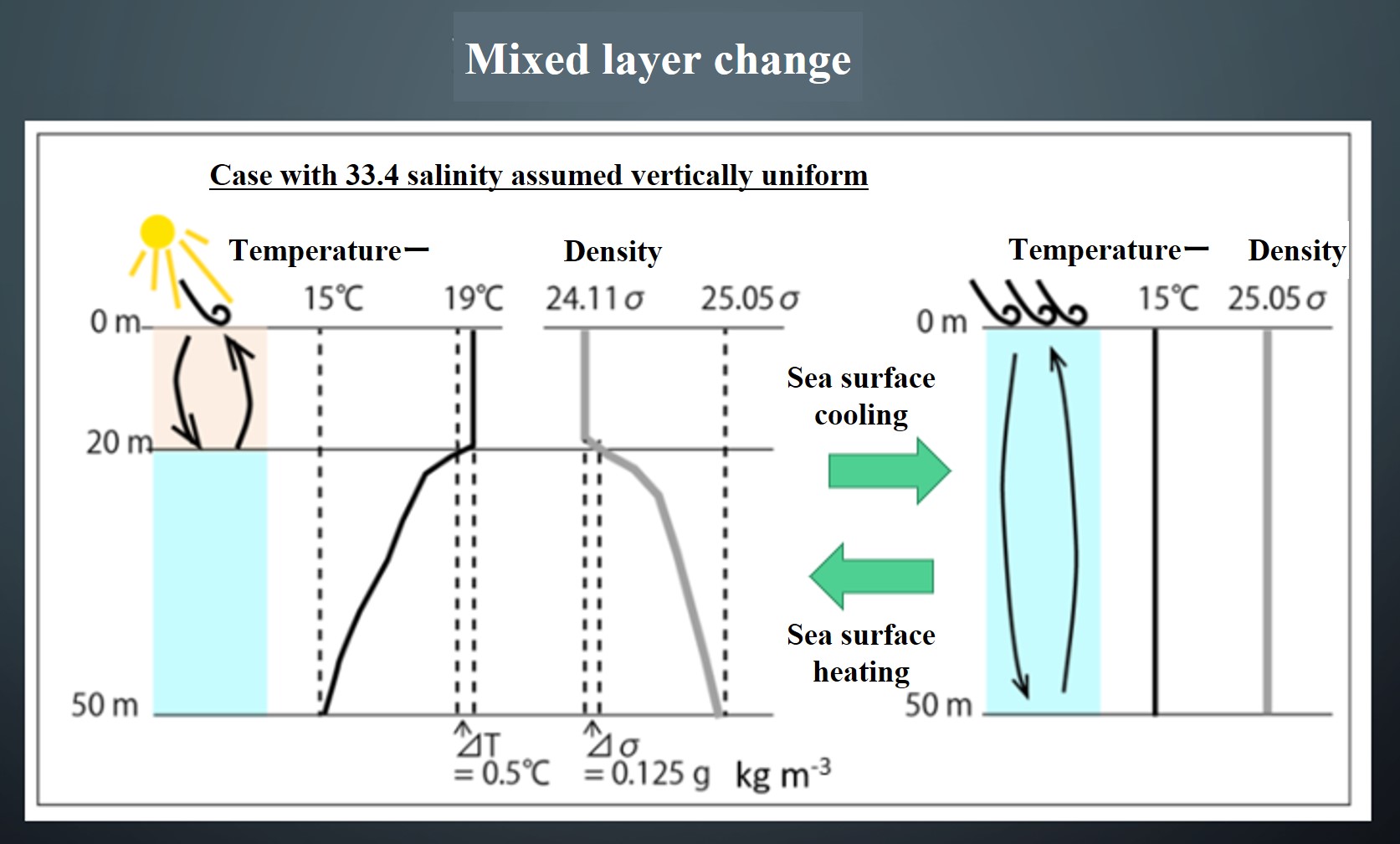Mixed and stratified layers A mixed layer is a layer of water that is vertically mixed. Water on the surface of the ocean is forced to mix by the force of wind. The mixed layer is called the surface mixed layer. A mixed layer also develops when the water on the ocean surface cools and the water subducts. Within the mixed layer, the density is uniform. Many parameters other than density, such as water temperature, are also uniform within the mixed layer.

The opposite term of mixed is stratified. The low and high densities of seawater are divided by color. Low density is white and high density is black. Near the surface of the ocean was mixed, with low-density water vertically homogeneous to a certain depth. Just below that mixed layer, the density increased with depth. It was vertically layered. The vertical distribution of density is shown in the figure. In the mixed layer, the density is uniform, while in the stratified layer, the density increases with depth.

When the water in the mixed layer is heated by solar radiation, it becomes low-density. The sudden low densification results in the formation of a significant pycnocline just below the mixed layer. The stratification is enhanced. The exchange of material between the mixed layer and just below it is severely restricted. This is common in the summer and results in a severely restricted supply of nutrients from deeper into the mixed layer.

The figure shows how mixing develops. The figure on the lower left shows mixing down to a depth of 20 m due to wind forces. The water temperature in the mixing layer is 19°C. After this, a cold northerly wind blew and cooled the sea surface. With the force of the wind, the mixed layer developed to a depth of 50m, and the water temperature in the mixed layer dropped to 15°C. This is the state shown in the figure on the right. Now, let us assume that the winds weakened and the sun heated the water. The mixed layer shallows to 20 meters, and the temperature within the mixed layer rises to 19°C. Thus, the mixed layer changes with weather conditions, and the appearance of the mixed layer changes dramatically with the seasons. This is the most important reason that characterizes the basic productivity of the ocean.
